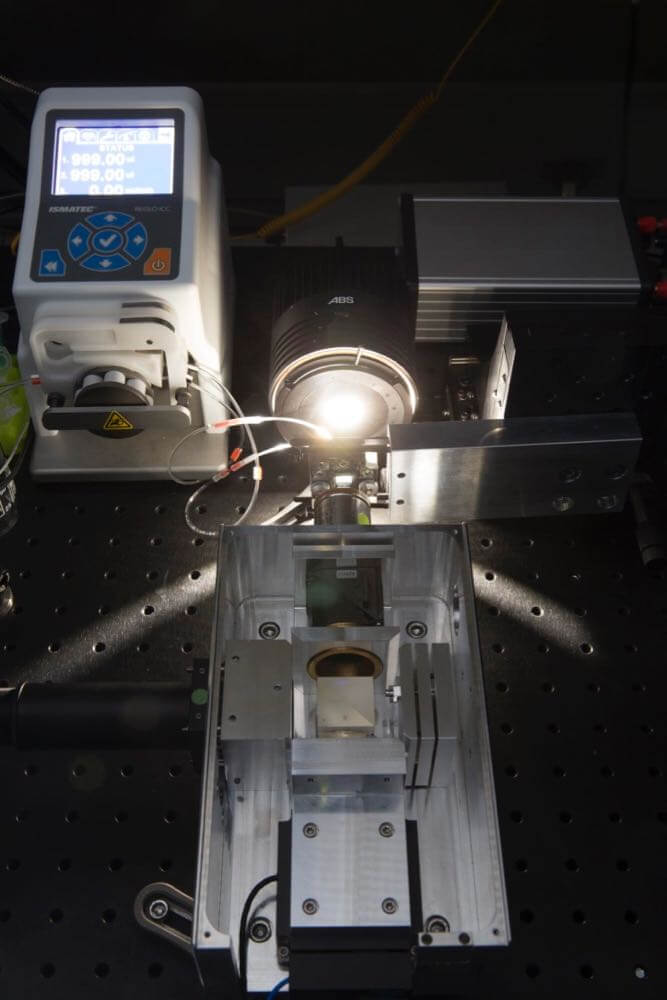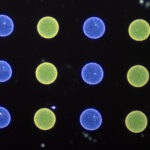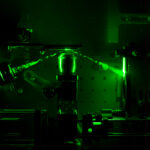- Home
- Research
- Nanobiophotonics
- Work-Groups
- Molecular Plasmonics
Molecular Plasmonics
The research work focuses on the potential of optical effects on plasmonic nanostructures. The design and synthesis of metal nanoparticles and nanostructures with desired defined optical properties (localized surface plasmon resonance, LSPR) in combination with (bio)molecular components (e.g. DNA) forms the technological basis. The generated functional nanostructures allow applications as optical markers and sensors. In sensor technology or sensory bioassays (colorimetry), plasmonic nanostructures act as optical signal converters. Such passive plasmonic nanostructures allow applications in medical diagnostics, food and water analysis, and environmental technology. On the other hand, active nanostructures can convert energy introduced as optical antennas, which can be used for the targeted manipulation of biomolecules as well as for applications in catalysis and materials processing.
Research Topics
Passive molecular plasmonics
- LSPR-based sensors and bioassays (snpLSPR, ensLSPR, LSPRi, colorimetry)
- Plasmonic markers
Active molecular plasmonics
- Nanolocal excitation release
- Nanolocal radiation sources
Areas of application

- Medical chip systems and bioanalytics
- Pathogen detection on plasmonic microarray or by colorimetric assay
- Water and food analysis
- Detection of zoonoses
- sepsis diagnostics
- Detection of antibiotic resistance genes (ARGs)
- Detection of biomarkers in plasmon microarrays
- Cancer
- Rheumatoid arthritis
- Plasmonic catalysis (degradation of pollutants)



